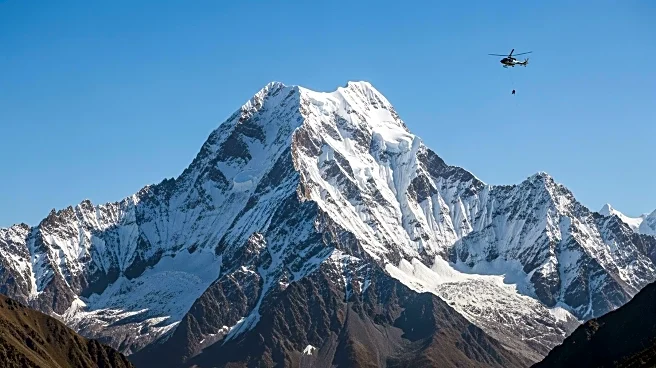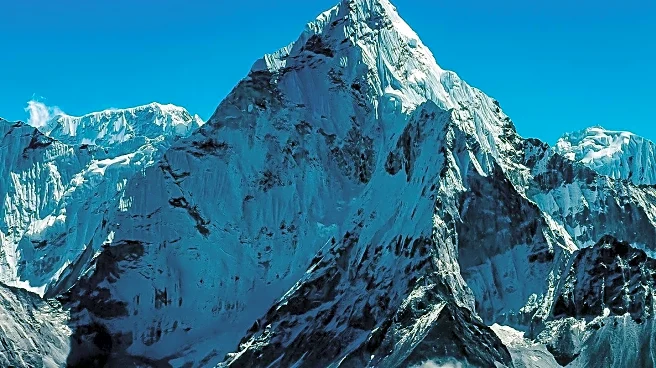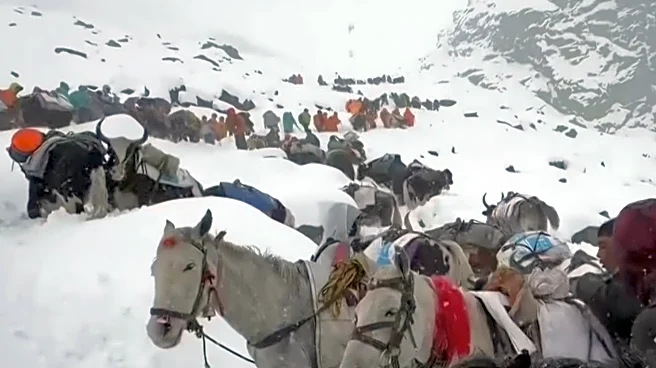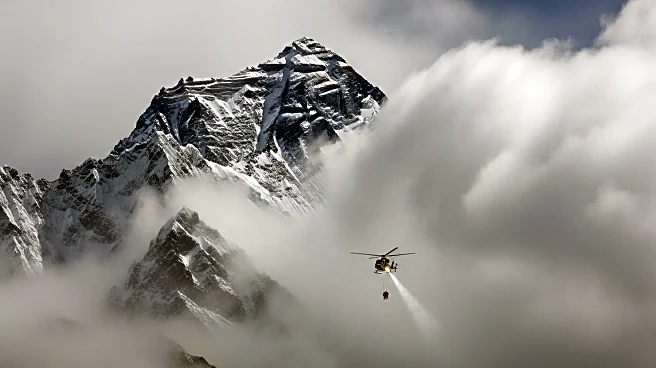What's Happening?
A severe snowstorm on the Tibetan side of Mount Everest stranded approximately 900 hikers, guides, and other staff over the weekend. The storm, which struck Saturday night, cut off access to the area where the hikers were camping at an altitude of over 16,000 feet. By Tuesday, all stranded individuals had reached safety, according to state media reports. The storm coincided with China's Golden Week holiday, a period when many Chinese travel domestically and internationally. The scenic area at Mount Everest in China's Tibet region has been temporarily closed following the incident.
Why It's Important?
The rescue operation highlights the risks associated with high-altitude trekking, particularly during unexpected weather events. The incident underscores the importance of preparedness and the need for effective communication and coordination during emergencies. The closure of the scenic area may impact local tourism and businesses reliant on the influx of visitors during peak seasons. Additionally, the event serves as a reminder of the unpredictable nature of mountain weather, which can pose significant challenges to both amateur and experienced hikers.
What's Next?
Authorities may review safety protocols and emergency preparedness measures to prevent similar incidents in the future. The temporary closure of the area could lead to increased scrutiny of tourism practices and regulations in high-risk regions. Stakeholders, including local businesses and government agencies, may collaborate to enhance safety measures and improve infrastructure to better handle emergencies. The incident may also prompt discussions on the environmental impact of tourism in sensitive areas like Mount Everest.
Beyond the Headlines
The event raises questions about the ethical responsibilities of tour operators and guides in ensuring the safety of their clients. It also highlights the cultural significance of Mount Everest as a symbol of adventure and challenge, attracting climbers from around the world despite the inherent risks. The incident may lead to increased awareness and advocacy for sustainable tourism practices that prioritize safety and environmental conservation.











